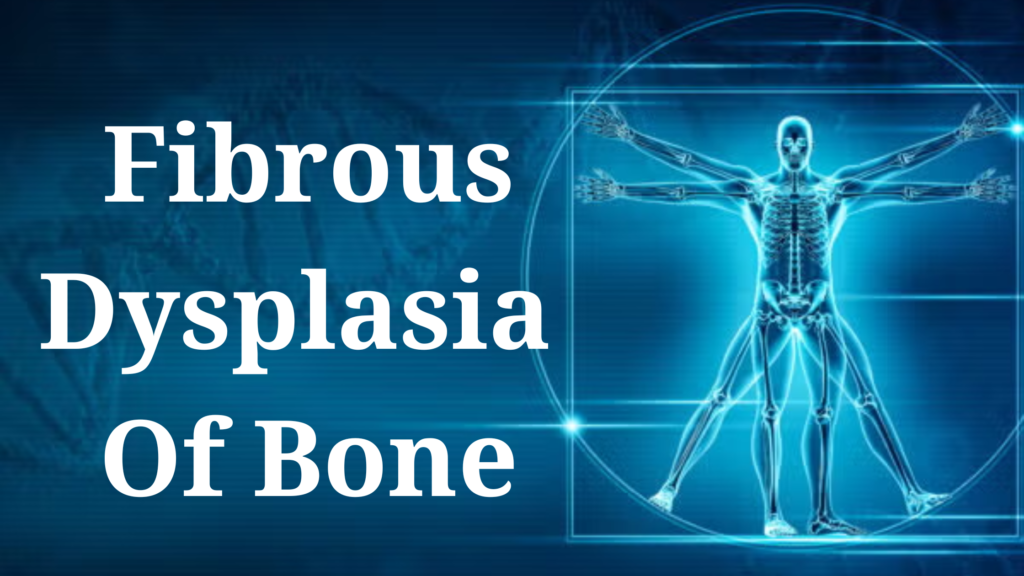Fibrous Dysplasia of Bone is a rare, noncancerous bone disorder where normal bone is replaced with fibrous (scar-like) tissue, leading to weak, deformed bones. It can affect one bone (monostotic) or multiple bones (polyostotic).
🧬 Cause:
- Caused by a mutation in the GNAS gene (not inherited).
- Occurs during early development, affecting bone-forming cells.
- The gene mutation causes abnormal bone growth and maintenance.
🦴 Symptoms:
- Bone pain (mild to severe)
- Swelling or deformity in affected bone
- Fractures (due to weak bones)
- Uneven growth or limb length discrepancy
- In polyostotic forms:
- May involve facial asymmetry, spine, ribs, pelvis, or long bones
- Rarely, may cause hormonal problems and early puberty (in McCune-Albright syndrome)
🔍 Diagnosis:
- X-rays: Show characteristic “ground-glass” appearance
- MRI or CT scan: To assess extent and complications
- Bone biopsy: Sometimes needed to confirm
- Blood tests: Often normal, but may help rule out other conditions
🧪 Types:
- Monostotic fibrous dysplasia – Affects only one bone (more common)
- Polyostotic fibrous dysplasia – Multiple bones involved
- McCune-Albright syndrome – Polyostotic FD + skin pigmentation + endocrine problems
💊 Treatment:
There is no cure, but management focuses on symptoms and preventing complications:
- Bisphosphonates: To reduce bone pain and slow progression
- Pain management
- Surgery:
- To correct deformities
- Stabilize bones with rods/plates
- Remove affected bone if necessary
- Monitoring: Regular imaging to track changes
